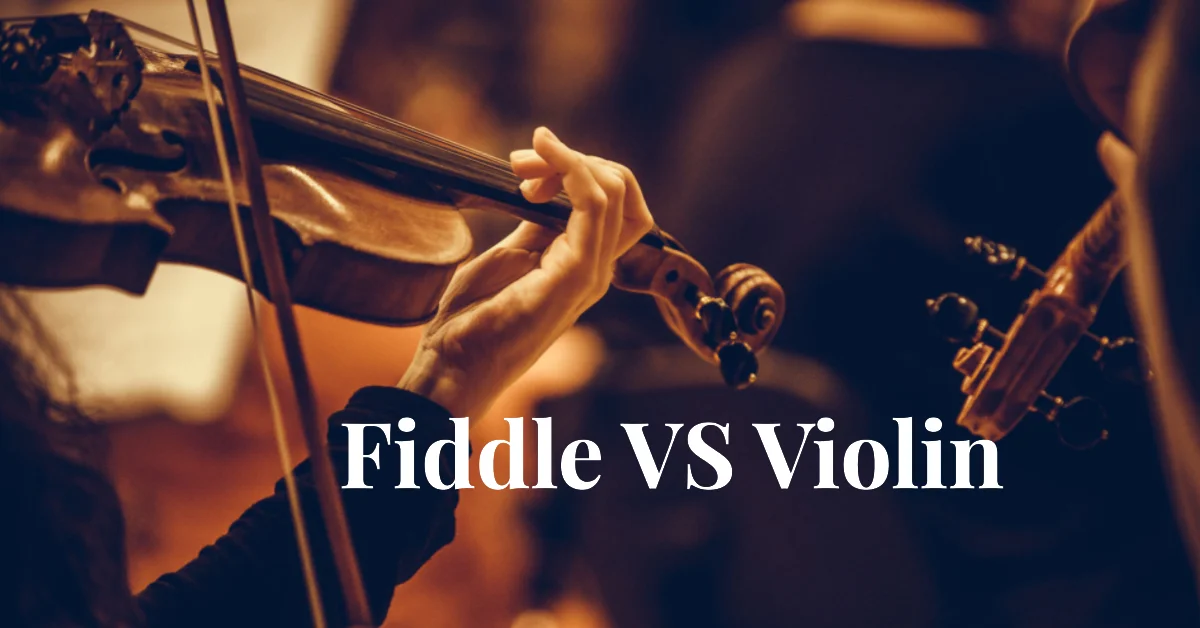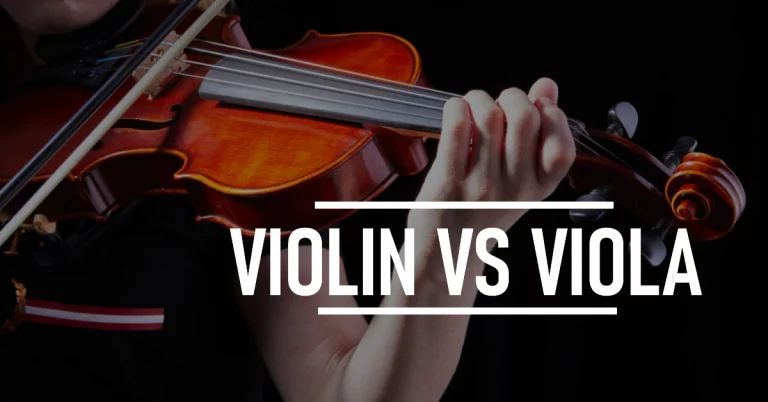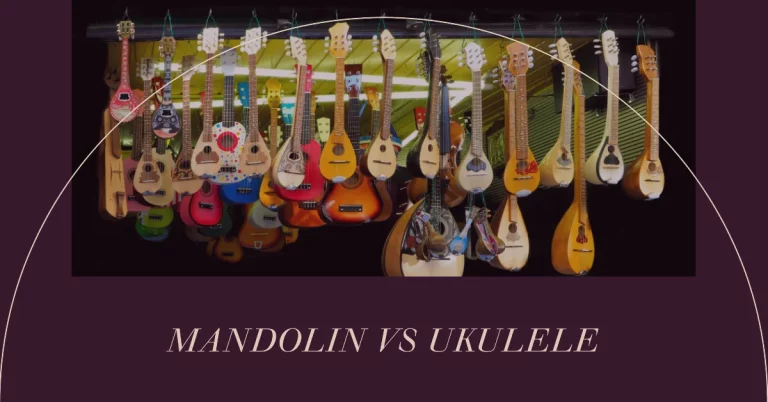What is difference between fiddle and violin
Did you know What is the difference between fiddle and violin? Are they the same instrument? If not, what sets them apart? This article aims to answer such questions. To understand the differences between, it is crucial to delve into their historical origins. The evolution of these instruments and their unique journeys contribute to the fascinating debate surrounding their distinctions.
Sure, here is a table of the key differences between fiddles and violins:
| Feature | Fiddle | Violin |
|---|---|---|
| Name | A violin that is played in folk music | A bowed string instrument with four strings tuned in perfect fifths |
| Origin | Germanic languages | Romance languages |
| Style of music | Often played in informal settings, such as out on the street or in pubs and bars | Often played in classical music |
| Strings | May use steel strings for a sharper, crisper sound | Usually uses synthetic polymer strings |
| Bridge | May have a flatter bridge for easier double stops | Usually has a more arched bridge for a cleaner note |
| Size | May be slightly larger or smaller than a standard violin | Usually the same size as a standard violin |
What is a Violin?
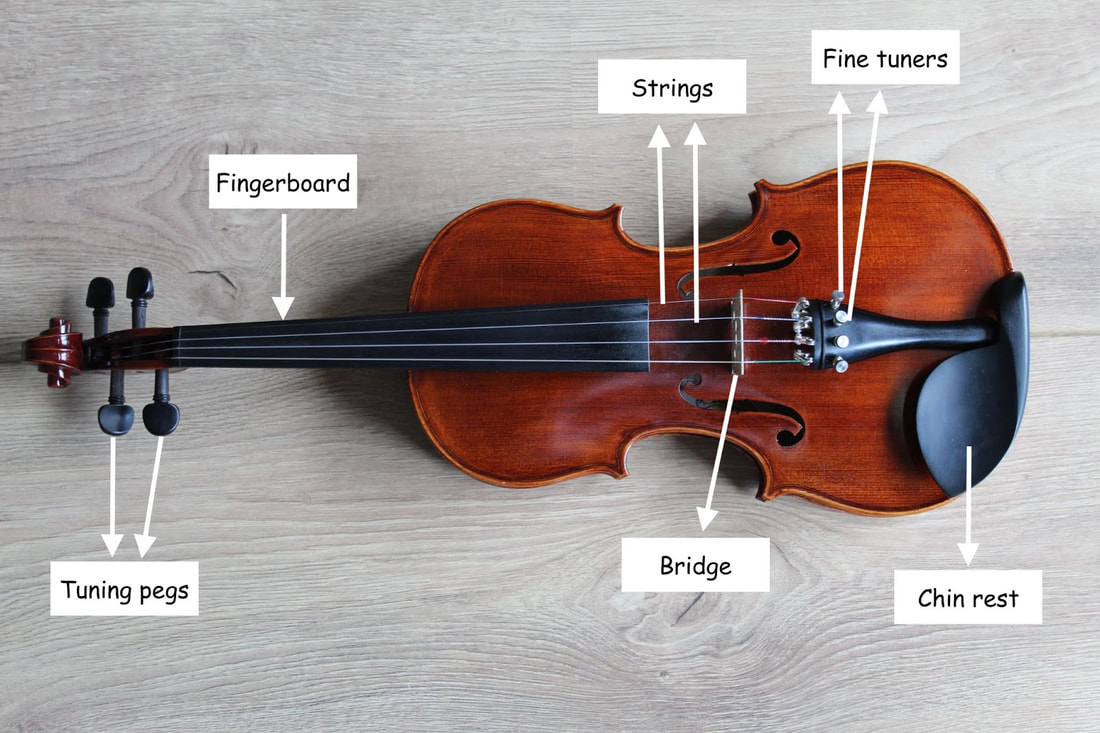
The violin is strings instrument which come from Italy and created in the 16th century. It makes beautiful, high-pitched sounds use in classical music.
The violin consists of four strings, typically play with a bow, and is held under the chin while playing. It can make many different sounds, from gentle to strong and loud.
What is a Fiddle?
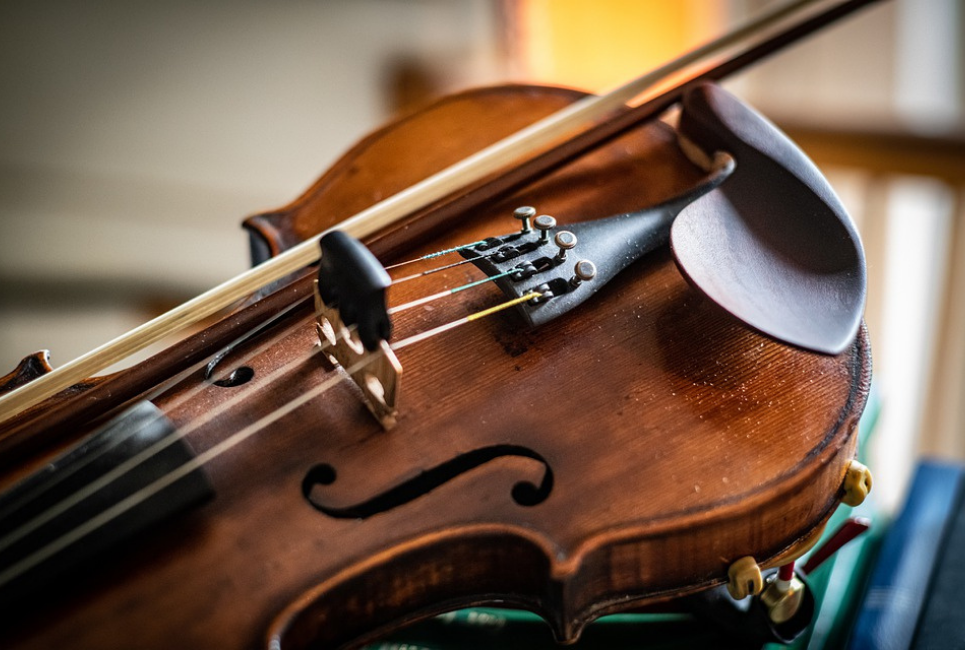
The term “fiddle” came from the Old English term “fithele,” which was additionally influenced by the Old High German term “fidula.”
The word “fiddle” means a violin that plays folk music. The fiddle, like the violin, is a stringed instrument, typically played with a bow. However, the style of music and the playing techniques are what set the fiddle apart.
The fiddle holds a deep cultural significance in various communities around the world. Fiddle music uses improvisation and foot-tapping rhythms, and is often connected to bluegrass, country, and Cajun genres.
Physical Differences Between a Fiddle and a Violin

They both have the same construction, with a hollow wooden body, four strings, and a bow. Additionally, the choice of strings, tailpiece, and fingerboard materials further affects the sound production and playability.
Fiddles often exhibit variations in their shape, arching, and body thickness, allowing for a wider range of sound possibilities. However, some fiddlers may prefer a flatter bridge to facilitate double-stop playing, a common technique in fiddle music.
Violin makers meticulously craft each instrument to achieve a balanced and resonant sound. The arching of the body, the placement of the sound post, and the graduation of the plates are carefully considered to produce the desired tonal qualities.
Playing Differences Between Violin and Fiddle
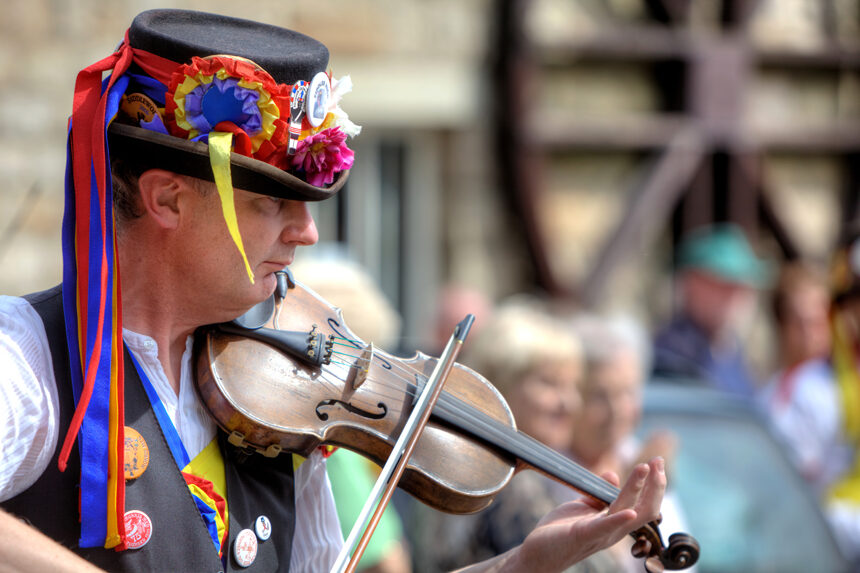
The main difference between is their playing style.
Violin playing often involves reading sheet music and adhering to a specific technique, with a focus on precision and tone production.
Fiddle playing is more about feeling the music and improvisation.
Fiddlers often play by ear and use techniques like slides, slurs, and double stops to add flavor to the music.
Fiddle vs. Violin: Music Styles
- Classical Music: This genre is typically associated with the violin. Classical music often requires strict adherence to musical notation and technique. Pieces from composers like Bach, Mozart, and Beethoven are commonly played on the violin.
- Folk Music: The fiddle is a staple in various folk music traditions around the world. This includes American folk music, Irish traditional music, and English folk music. Folk fiddling often involves a lot of improvisation and variation.
- Country Music: The fiddle is a key instrument in country music. Fiddle players in this genre often use techniques like double stops, slides, and drones to create a distinctive sound.
- Bluegrass Music: Bluegrass fiddling is a style that blends elements of country and jazz. It’s characterized by fast, virtuosic playing and complex improvisation.
- Jazz: The violin has a place in jazz music as well. Jazz violinists often use techniques from classical violin playing but incorporate improvisation and elements of swing rhythm.
- Rock and Pop Music: Both the fiddle and the violin can be found in rock and pop music. They can be used to play melodic lines, solos, or to add texture to the music.
- Blues: The fiddle has a long history in blues music, especially in the early days of the genre. Blues fiddling often involves sliding into notes and playing with a lot of emotional expression.
- Celtic Music: The fiddle is a central instrument in Celtic music, especially in Irish and Scottish traditions. Celtic fiddling often involves rapid-fire notes, ornamentation, and a driving rhythm.
- Indian Classical Music: The violin is used in Indian classical music, both in the Hindustani tradition of the North and the Carnatic tradition of the South. The playing style is quite different from Western classical violin, with more emphasis on slides and microtones.
- Gypsy Music: The violin is a key instrument in Romani (Gypsy) music. This style of playing is characterized by passionate, virtuosic performances and a lot of improvisation.
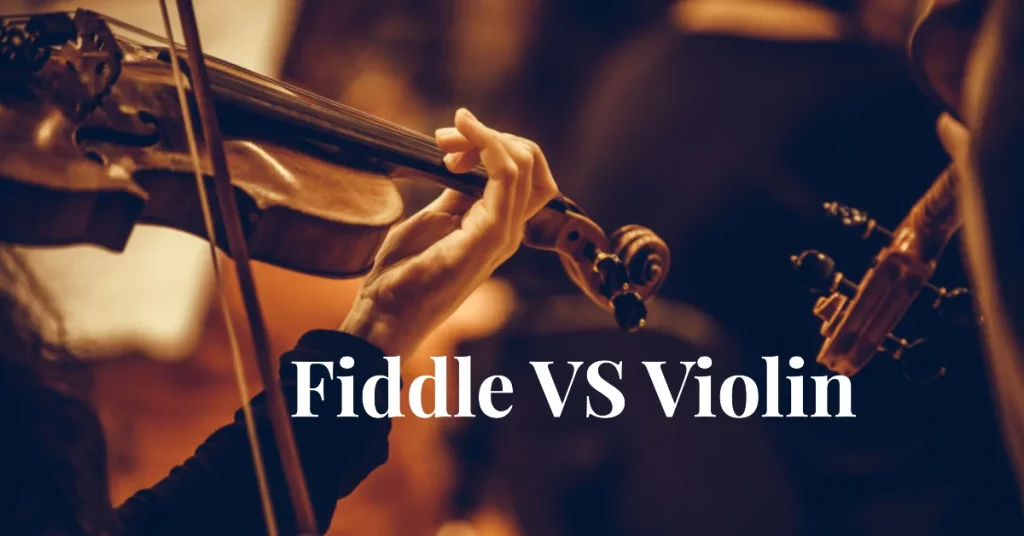
Accompaniment in Fiddle and Violin Music
In classical music, the violin often plays the lead role in an orchestra, accompanied by other instruments like the cello and viola. In contrast, the fiddle is usually part of a band setup in folk music, often accompanied by instruments like the banjo, guitar, and mandolin.
Fiddle and Violin in Different Cultures
The violin and fiddle are play in various cultures worldwide. For instance, the Irish fiddle is known for its fast, lively tunes, while the classical violin is associate with the refined melodies of European concert halls.
Learning to Play: violin and a fiddle
Learning to play either instrument requires dedication and practice. However, the learning curve may differ. Classical violin often involves formal training, learning to read sheet music, and mastering specific techniques. Fiddle playing, on the other hand, is often learn by ear, with a focus on improvisation and personal expression.
| Aspect | Fiddle | Violin |
|---|---|---|
| Instrument Setup | Often prefer a flatter bridge for playing multiple strings at once | Standard setup |
| Technique | More informal, focus on folk styles and improvisation | More formal, follows classical training methods |
| Music Reading | Often learn by ear | Typically learn to read music notation |
| Repertoire | Rich with folk and traditional tunes | Often includes classical music |
| Bow Hold | May use a more relaxed grip | Often use a formal bow hold |
| Bow Strokes | Variety of bow strokes for a rhythmic and energetic sound | Focus more on smooth, sustained bow strokes |
| Improvisation | Key part of fiddle playing | Less common in classical violin playing |
| Ornamentation | Includes slides, drones, and grace notes | Ornamentation usually written into the score |
| Posture | May use a more relaxed posture | Often use a formal posture with the instrument on the shoulder |
| Practice | Regular practice with focus on technique and folk style | Regular practice with focus on technique and classical style |
| Listening | Important to understand folk and traditional styles | Important to understand classical music styles |
| Performance | Often perform in folk bands or at dances | Often perform in orchestras or chamber groups |
| Tuning | Typically G, D, A, E, but alternate tunings are common | Typically G, D, A, E |
| Learning Resources | Private lessons, online tutorials, folk method books | Private lessons, online tutorials, classical method books |
| Community | Fiddle groups, folk music camps | Orchestras, chamber music groups, classical music camps |
Similarities between fiddle and violin
Sure, here is a table of the similarities between a fiddle and a violin:
| Feature | Fiddle | Violin |
|---|---|---|
| Number of strings | 4 | 4 |
| Type of strings | Steel or gut | Steel or gut |
| Bowing technique | Same | Same |
| Playing style | Varies, but often includes improvisation | Varies, but often includes precision and accuracy |
| Musical genres | Folk, bluegrass, country, jazz, rock, classical | Classical, chamber music, orchestral music |
| Physical appearance | Same | Same |
| Construction | Same | Same |
Conclusion
In summary, the fiddle and violin are the same instrument, but they are play differently. Whether you’re a fiddler or a violinist, it’s about expressing the music you love.
So, pick up your fiddle (or violin), and let the music play!
This exploration of the fiddle and violin has hopefully shed some light on their differences and similarities. Whether you’re a seasoned musician, a curious beginner, or simply a music lover, understanding these nuances can deepen your appreciation for these versatile instruments.
So, keep playing, keep exploring, and keep the music alive!
FAQ’s
The main difference between is the style of music that is typically play.
Yes, a classical violinist can play fiddle tunes. However, they may need to adapt their technique to match the style and characteristics of fiddle playing.
The first position refers to the placement of the fingers on the fingerboard, where the notes are play without shifting the hand up or down the neck.
The difference between violin playing and fiddle playing is mainly in the style and sound. Violin playing is often characterize by a more classical and precise technique, while fiddle playing tends to have a more energetic, rhythmic, and improvisational approach.
Fiddle players often prefer steel strings because they provide a bright and loud sound, which is well-suit for the lively and energetic style of fiddle music.
The fiddle style of music encompasses various genres such as folk, country, bluegrass, Cajun, and traditional music from different cultures.
One of the main differences is type of strings use. Violin players often use gut or synthetic-core strings for a warmer and more traditional sound, whereas fiddle players typically use steel or steel-core strings for a brighter and more responsive sound.
It is possible to play classical music on a fiddle, the instrument’s sound and design are best for the energetic and rhythmic style of fiddle music.
When playing in a symphony or classical music setting, musicians typically use the term “violin” rather than “fiddle.” The techniques, repertoire, and sound required for a symphony setting differ from those of fiddle music.
A fiddle usually has four strings, tuned to G, D, A, and E. However, some fiddles may have three strings, particularly in certain traditional music styles.

